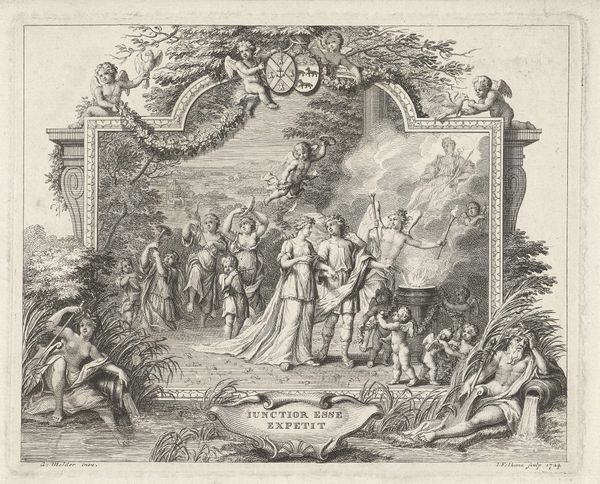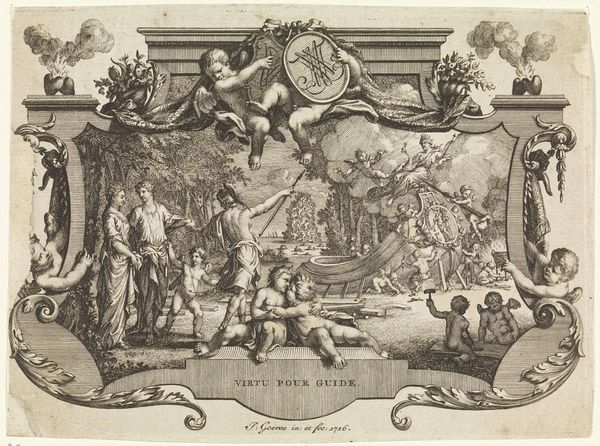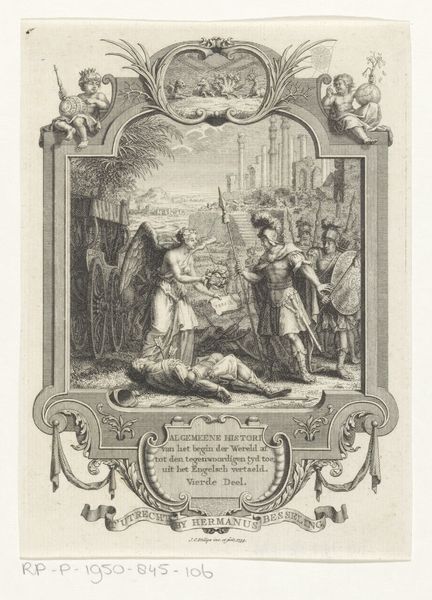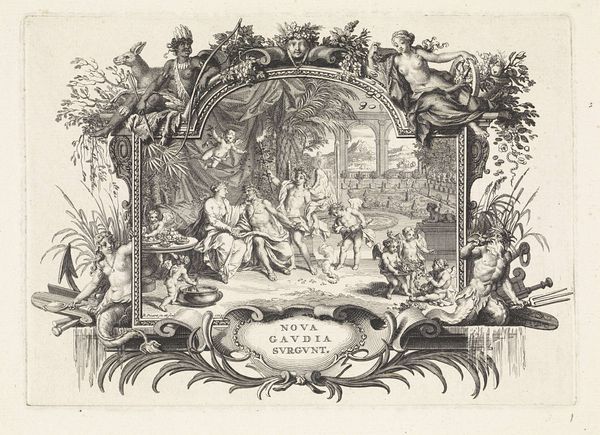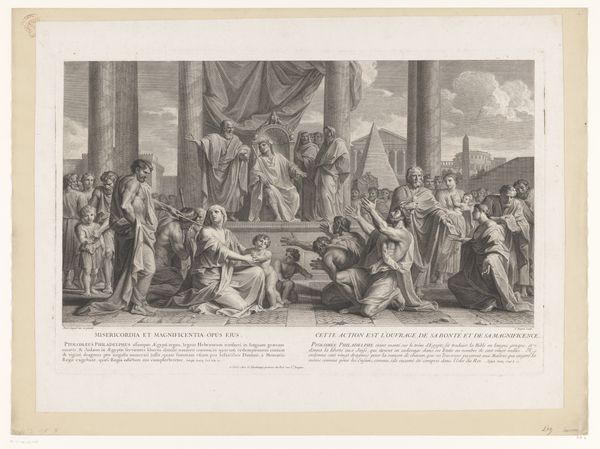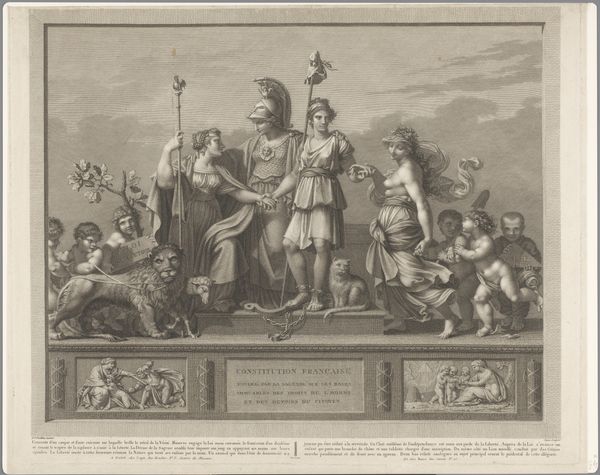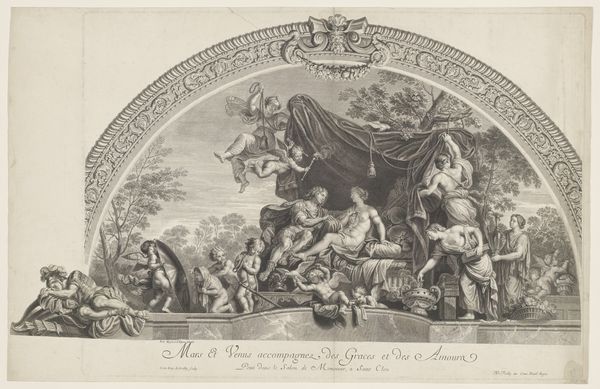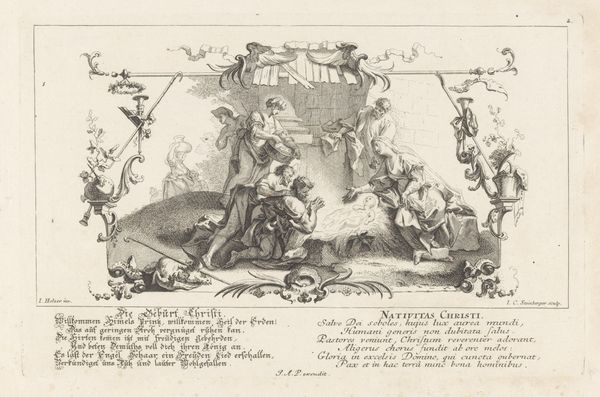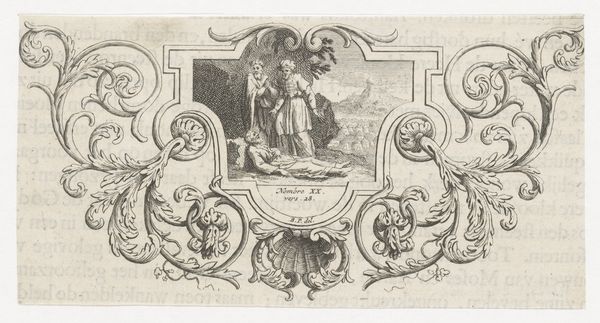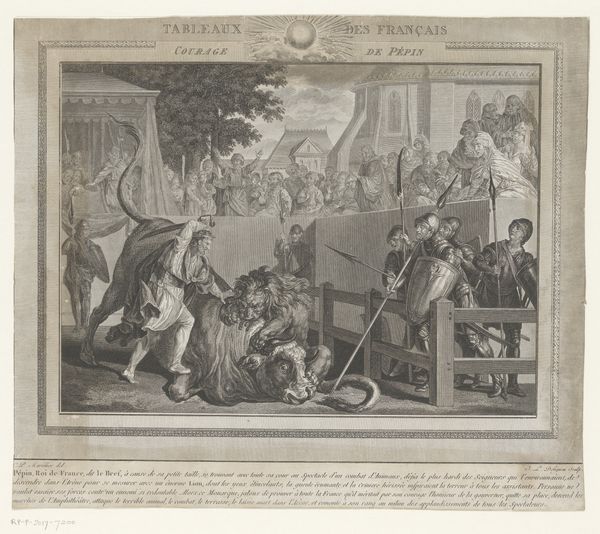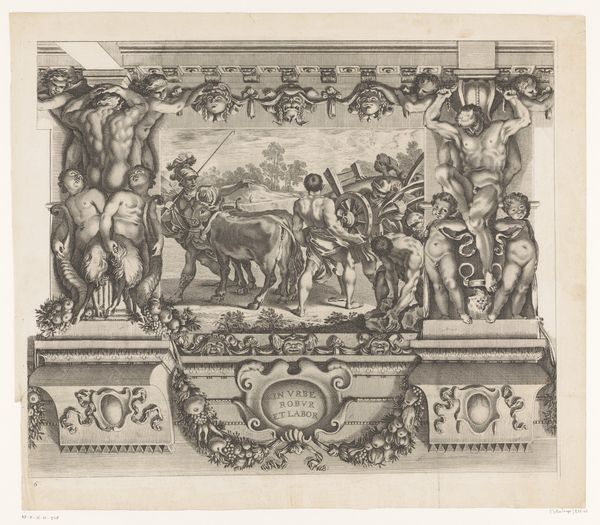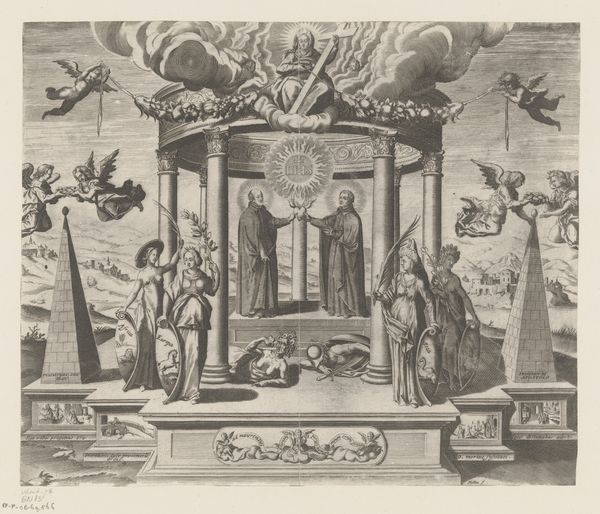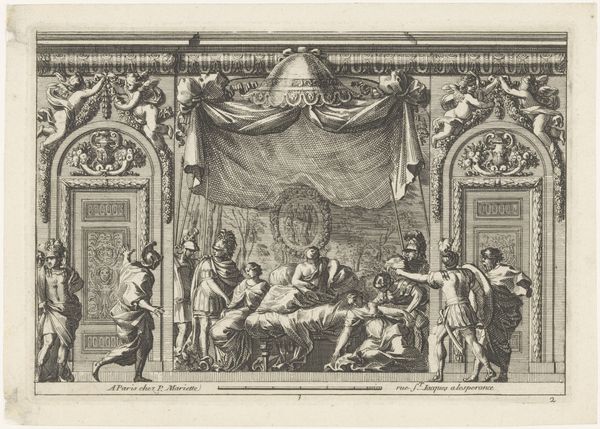
Allegorie op Zweden of het koningschap van Frederik I van Zweden 1720 - 1751
0:00
0:00
anonymous
Rijksmuseum
print, engraving
#
portrait
#
allegory
#
baroque
#
pen drawing
# print
#
figuration
#
line
#
history-painting
#
engraving
Dimensions: height 360 mm, width 422 mm
Copyright: Rijks Museum: Open Domain
Editor: This engraving, "Allegory on Sweden or the Kingship of Frederick I of Sweden," from between 1720 and 1751, has so much going on! It feels incredibly dense, like a tapestry woven with symbolic figures and text. What narratives do you see emerging from this composition? Curator: It's a powerful visual statement, isn’t it? It’s key to consider how these allegorical images functioned. It's essentially a piece of political propaganda, masked as art. Notice how Frederick is presented – almost like a Roman Emperor. Why do you think the artist chose this particular visual language? Editor: To legitimize his rule? To connect him to a glorious past? Curator: Exactly! The artist is very consciously constructing a particular image of power and legitimacy. Think about the context: Sweden was navigating a period of transition and this image works to stabilize and reinforce the idea of the monarchy. What other symbols do you notice and what might they represent in relation to Frederick's kingship and Sweden's position at the time? Editor: I see figures of virtue, prosperity. Almost a suggestion of a return to traditional values after a tumultuous period. It feels very deliberate. Is that also why it's in black and white and reminiscent of something classic, as if trying to harken back to the past? Curator: That's insightful! The monochrome emphasizes the gravity and timelessness they want to associate with Frederick's reign. Now, how might we interpret this image in relation to contemporary conversations about nationalism and power? Are there parallels or lessons we can draw from this historical example? Editor: It really makes you think about how leaders want to be viewed and what narratives they’re trying to build. Thanks, I see a lot of contemporary significance in this allegorical image. Curator: Absolutely. The interplay between image, power, and identity continues to be profoundly relevant. It’s fascinating how historical artwork still offers insights into modern questions of governance.
Comments
No comments
Be the first to comment and join the conversation on the ultimate creative platform.
